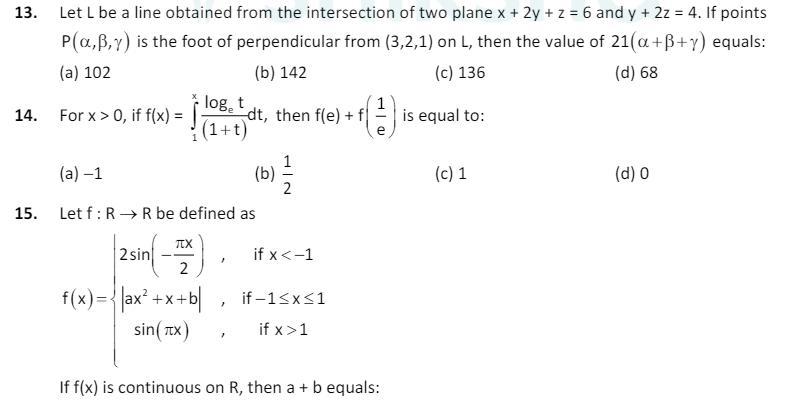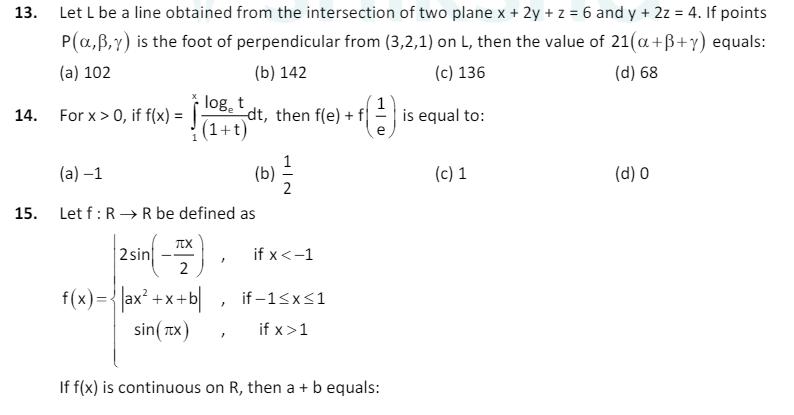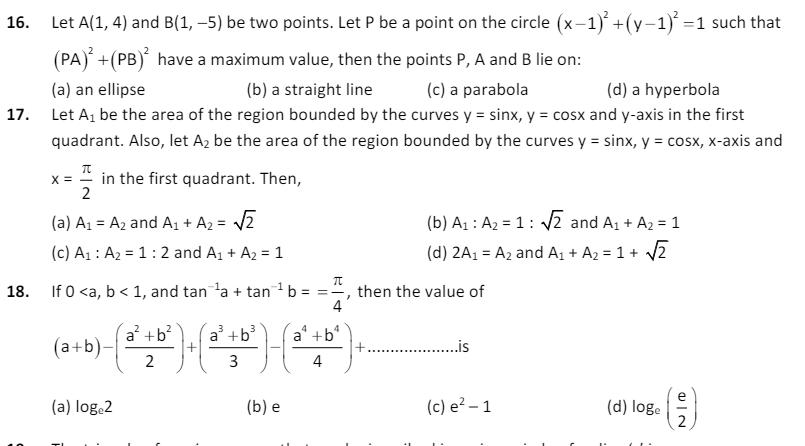Answered step by step
Verified Expert Solution
Question
1 Approved Answer
13. Let L be a line obtained from the intersection of two plane x + 2y + z = 6 and y + 2z



13. Let L be a line obtained from the intersection of two plane x + 2y + z = 6 and y + 2z = 4. If points P(a,,y) is the foot of perpendicular from (3,2,1) on L, then the value of 21(a++y) equals: (a) 102 (b) 142 (c) 136 10Be t 1 14. For x>0, if f(x) = dt, then f(e)+f| is equal to: (1+t) e (a) -1 (b) 15. Let f R R be defined as 2 sin(-) f(x)=ax+x+b if x 1 If f(x) is continuous on R, then a + b equals: (d) 68 (c) 1 (d) 0 13. Let L be a line obtained from the intersection of two plane x + 2y + z = 6 and y + 2z = 4. If points P(a,,y) is the foot of perpendicular from (3,2,1) on L, then the value of 21 (a++y) equals: (a) 102 (b) 142 (c) 136 (d) 68 10Be t 1 14. For x>0, if f(x) = dt, then f(e) + fl is equal to: (1+t) e (a) -1 (b) (c) 1 (d) 0 15. Let f R R be defined as TTX 2 sin if x 16. Let A(1, 4) and B(1,-5) be two points. Let P be a point on the circle (x-1)+(y-1)=1 such that (PA)+(PB) have a maximum value, then the points P, A and B lie on: (a) an ellipse (b) a straight line (c) a parabola (d) a hyperbola 17. Let A be the area of the region bounded by the curves y = sinx, y = cosx and y-axis in the first quadrant. Also, let A2 be the area of the region bounded by the curves y = sinx, y = cosx, x-axis and 18. x = - in the first quadrant. Then, 2 (a) A = A2 and A1 + A = 2 (c) A1 A2 1:2 and A1 + A2 = 1 -1 If 0
Step by Step Solution
There are 3 Steps involved in it
Step: 1

Get Instant Access to Expert-Tailored Solutions
See step-by-step solutions with expert insights and AI powered tools for academic success
Step: 2

Step: 3

Ace Your Homework with AI
Get the answers you need in no time with our AI-driven, step-by-step assistance
Get Started


